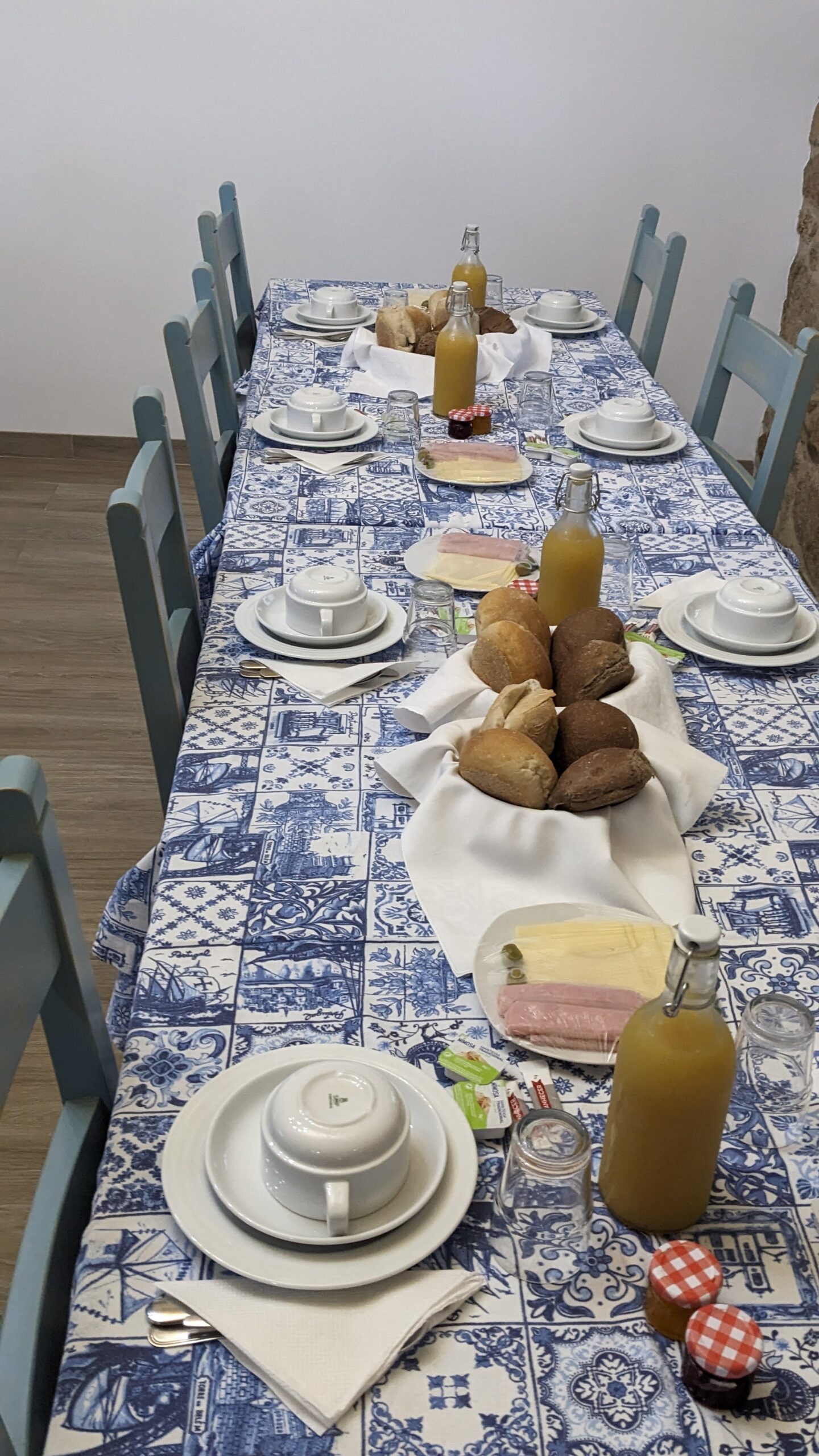The Camino Portugués is a pilgrimage route steeped in history and culture, but for adventurous foodies, it’s also a delicious journey of discovery. While the iconic Pastel de Nata, a flaky pastry filled with creamy egg custard, is a must-try, Portugal’s culinary scene offers a treasure trove of flavors waiting to be explored.
And yes, even our vegetarian cohort loved that you could get vegetarian food in Portugal!
This guide will take you on a mouthwatering adventure through the regional specialties you’ll encounter on your Camino adventure.
A Regional Tapestry of Flavors
Portugal is a land of diverse landscapes, and this is reflected in its cuisine. As you walk the Camino, you’ll traverse distinct regions, each with its own unique set of ingredients and traditional dishes.
-
Lisbon and Central Portugal: Your journey begins in Lisbon, where you can indulge in the quintessential Pastel de Nata and its close cousin, the Pastel de Belém, with its slightly caramelized crust. Venture inland to Alentejo and savor rich stews simmered for hours with local wines. Sample cured meats and cheeses paired with crusty bread and a glass of vinho verde, a light and refreshing local wine.
-
The Portuguese Coast: Moving towards Porto, the bounty of the ocean takes center stage. Freshly caught seafood features prominently in stews, grilled dishes, and cataplanas, a copper pot simmering a medley of seafood, vegetables, and herbs. Don’t miss the opportunity to try percebes, goose barnacles prized for their unique salty flavor.
-
Porto and Northern Portugal: As you reach Porto, the legendary Francesinha awaits. This savory sandwich overflows with layers of sausage, steak, ham, and melted cheese, a decadent and hearty reward for your pilgrimage efforts. Northern Portugal is also known for its cured sausages like chouriço and farinheira, perfect for a light lunch with a crusty baguette.
Embrace the Culinary Adventure
The Camino is an excellent opportunity to step outside your comfort zone and explore new flavors. Don’t be afraid to venture into local cafes and restaurants, many of which offer daily specials showcasing fresh, seasonal ingredients. Embrace the chance to try something new every day, whether it’s a regional cheese you’ve never heard of or a local take on a familiar dish.
-
Pastelaria Culture: Portugal has a strong “pastelaria” culture, with cafes serving an array of pastries and breads throughout the day. Stop for a mid-morning espresso and a Pastel de Belém, or indulge in a Bolo de Mel (honey cake) for a touch of sweetness.
-
Local Markets: Immerse yourself in the sights and smells of local markets. Purchase fresh fruits and vegetables, sample regional cheeses and cured meats, and pick up a loaf of crusty bread for a picnic lunch along the way. Many markets also offer cooked food stalls, perfect for grabbing a quick and delicious bite.
-
Dining Out: Evenings are the perfect time to settle into a cozy restaurant and savor a hearty Portuguese meal. Cozido à Portuguesa, a stew packed with meats and vegetables, is a comforting dish perfect for cooler evenings. For a lighter option, try Arroz de Pato, a comforting duck rice dish with a rich and flavorful saffron broth.
Food and Culture: A Delicious Marriage
Food is more than just sustenance on the Camino; it’s a way to connect with Portuguese culture and traditions. Many dishes are passed down through generations, reflecting the local way of life and the bounty of the surrounding region. Sharing a meal with fellow pilgrims or locals is a wonderful opportunity to learn about Portuguese cuisine and culture in a relaxed and social setting.
-
Regional Specialties: Ask restaurant owners or fellow pilgrims about regional specialties. This is a great way to discover hidden gems and dishes you might not otherwise have encountered. Trying these specialties allows you to appreciate the unique flavors and traditions of each region you traverse.
-
Wine and Dine: Portugal boasts a long history of winemaking, and each region produces its own unique varietals. Pair your meal with a glass of local wine for a truly immersive culinary experience. Vinho verde, a light and refreshing white wine from the north, pairs beautifully with seafood dishes, while Douro Valley reds complement richer stews and meats.
4. Savor the Journey, Savor the Flavors
The Camino is a journey for all the senses, and food is a big part of that experience. Ditch the restrictive diets and embrace the opportunity to savor the delicious flavors Portugal has to offer. From fresh seafood by the coast to hearty stews in the interior, each region offers a unique culinary adventure.
So, relax, indulge, and let the food be another source of inspiration and enjoyment on your Camino pilgrimage.
Be the first to read the book!
Join the launch team of the upcoming book. I would love to share the early drafts, bonuses and general experience of writing the book about our camino. For an author the journey is not over until the book is written.





